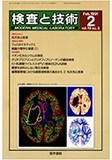- 有料閲覧
- 文献概要
早期診断の戦略(方法)としては,スクリーニングとケースファインディング(患者の掘り起こし)の2通りに分けることができる.スクリーニングでは,病気の初期徴候を見つけるために一般大衆に検査や診察を受けさせるように勧める.甲状腺疾患の疫学調査におけるスクリーニングでは,特定の地理的区域内で抽出した住民を受診させるようにする必要がある.このような調査方法は,疑ってもみなかった疾患の広がりや広範囲スクリーニングの潜在的有用性を明らかにすることができるが,実際上の問題として,決して効率のいいスクリーニングではない.なぜならば,患者に定期検診や多種目スクリーニングを受けさせようとしても,今までに定期検診を避けてきたようなハイリスク患者はおそらく参加しないだろうからである.
スクリーニングと違ってケースファインディングの場合では,目指す疾患とは関係のない理由で医師を受診した患者を対象にしている.一般には,医師はほかの目的のために採血した検体を甲状腺機能のスクリーニングに用いることができる.ケースファインディングはほかのどの方法よりも人口の多くを網羅することができる.なぜならば,たとえ定期的に治療を受けていない人や,スクリーニングを勧めても参加しないような人たちであっても,たいていの成人はいつかの時点で一度は医師にかかるからである.
Strategies for early diagnosis can be classified into screening and case-finding. Screening programs invite the general public to have tests or examinations intended to find early evidence of disease. Epidemiologic studies of screening for thyroid disease attempt to recruit a population sample of a particular geographic area. Such research studies show the extent of unsuspected disease and the potential benefits of universal screening but do not represent the effectiveness of screening in practice. For example, when patientsare invited to have a periodic health examination and multiphasicscreen, patients at high risk who have avoided regular care in thepast are unlikely to participate.
In contrast to screening, case-finding tests patients who have cometo their physicians for unrelated reasons for the disease. Usually,physicians can do the thyroid screening test when blood would bedrawn for other reasons. Case-finding can cover a larger proportion ofthe population than other strategies because most adults visit aphysician at some time, even if they do not use medical care regularlyor will not respond to a special invitation to be screened.
Copyright © 1991, Igaku-Shoin Ltd. All rights reserved.


